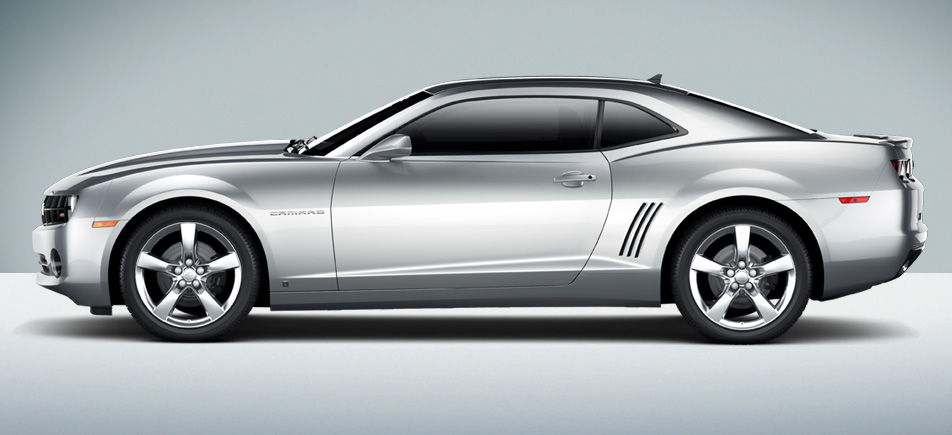Streamlining - both aerodynamic and sylistic - was The Next Big Thing in automobile body design around the mid-1930s. Mostly, cars were given a marginally aerodynamic treatment in the form of rounded rear ends, while front ends retained the usual pre-streamlining features. In other words, little aerodynamic efficiency was gained.
This was happening in Germany as well as the other main car-producing countries in those days - USA, England, France and Italy. The German firm Adler even made some cars that were aerodynamically more efficient, as did Hanomag and Horch. Mercedes-Benz also made at least one aerodynamic passenger car, but mostly opted for the rounded rear option on a few cars called
Autobahnkurier.
The term Autobahnkurier was applied to some Mercedes W29 Typ 500K and 540K coupés (the W denotes
Werknummer - "Works Number" - a more precise designation than the
Typ "Type" number that can and has been applied to more than one Werknummer over the years). Wikipedia entries for the 500K and 540K are
here and
here.
Besides those coupés, some Mercedes
Stromlinien Limousine - streamlined sedans - have been referred to as Autobahkuriers, though perhaps not by Mercedes. (My personal library and the Internet are lacking regarding official Mercedes-Benz designations.) Regardless, today's post presents some examples of both coupés and four-door sedans wuth traditional front ends and rounded rears.
As best I can tell based on Internet searches, some steamlined sedans were
W18 Typ 290 based, and others were of
W142 Typ 320.
Sources disagree regarding the number of true Autobahnkuriers built, also the number of survivors. Some say ten were made, others claim 12. As for survivors, for certain, one 500K exists, as does one 540K.
Autobahnkurier bodies were desined by
Friedrich Geiger (1907-1996), who later was in charge of Mercedes styling.
Photo sources for the surviving 540K are extremely varied, and mostly defy citation, as the car has appeared in a number of shows and apparently lacks an official set of images. Also, given the similarity of the streamlined sedans, the type designations found on the Internet might not be accurate.
Gallery
1934 Mercedes W29 500K Autobahnkurier
One of my sources claims that this was the original Autobahnkurier displayed at the February 1934 Berlin automobile show. It's a very attractive design in line with the emerging "streamlining" styling details of the day.
Those details include teardrop-profile fenders, smooth downward passenger compartment greenhouse profile, V'd two-piece windshield, and the boat-tail aft planview of the greenhouse. Note the high, tiny, impractical backlight window. Compare the overall design to the 1933 Cadillac Aero Coupe.
500K Autobahnkurier owned by the Shah of Persia - photo via Wikipedia
This photo was taken at a Teheran car museum. The hood is shorter than seen in other coupé photos. Might the photos above actually be of a 540K? Or perhaps the car in those photos was given a version of the longer 129.5-inch (3290 mm) wheelbase instead of the 117.3-inch (2980 mm) wheelbase chassis probably used for the car shown here.
540K Autobahnkurier - unknown photo source
From this perspective, the passenger compartment seems quite short, though the car's proportions are similar to the much-admired 500K and 540K roadsters.
1935 Mercedes W18 Typ 290 Stromlinien Limousine - factory images
The design shown here is on a W18 platform according to the Internet photo source, and it looks the same as that shown below as W142s. Therefore, I cannot guarantee that the Werknummeren jibes with the images. That said, the streamlining details are not as strong as on the Autobahnkurier design shown above. For example, two-segment windshield
is not as strongly V'd as the coupé's.
The greenhouse profile has a slight ogive curve. The rear fender is not quite teardrop in profile, though it is spatted, like the coupé's. Doors are hinged on the B-pillar, but that pillar is thin above the beltline.
The backlight window is two-piece, divided by that central fin or windsplit running down over the spare tire lid.
1938c Mercedes W132 Typ 290 Stromlinien Limousine - unidentified photo sources
As mentioned, the body design is the same as the one just pictured.
This photo might be via Daimler Benz's museum. Tail lights appear here, but not on the W18 images.
The three-pointed star at the bottom of the fin/windsplit is a cute detail.
Note the contrast between the traditional front and "streamlined" rear.






%20Autobahnkurier%20show%20car%20-%20factory%20-%20left%20front%2023.png)
%20Autobahnkurier%20show%20car%20-%20factory%20-%20left%20rear%2034.png)

%20Autobahnkurier%20-%20unknown%20-%20left%20side.png)
%20-%20factory%20-%20left%20front%2016.png)
%20-%20factory%20-%20left%20side.png)
%20-%20factory%20-%20left%20rear%2014.png)
%20-%20unknown%20-%20left%20front%2078.png)
%20Autobahn%20Kurior%20-%20factory%20-%20left%20rear%2023.png)
%20-%20unknown%20-%20left%20rear%2089.png)
%20-%20unknown%20-%20right%20front%2023.png)





































